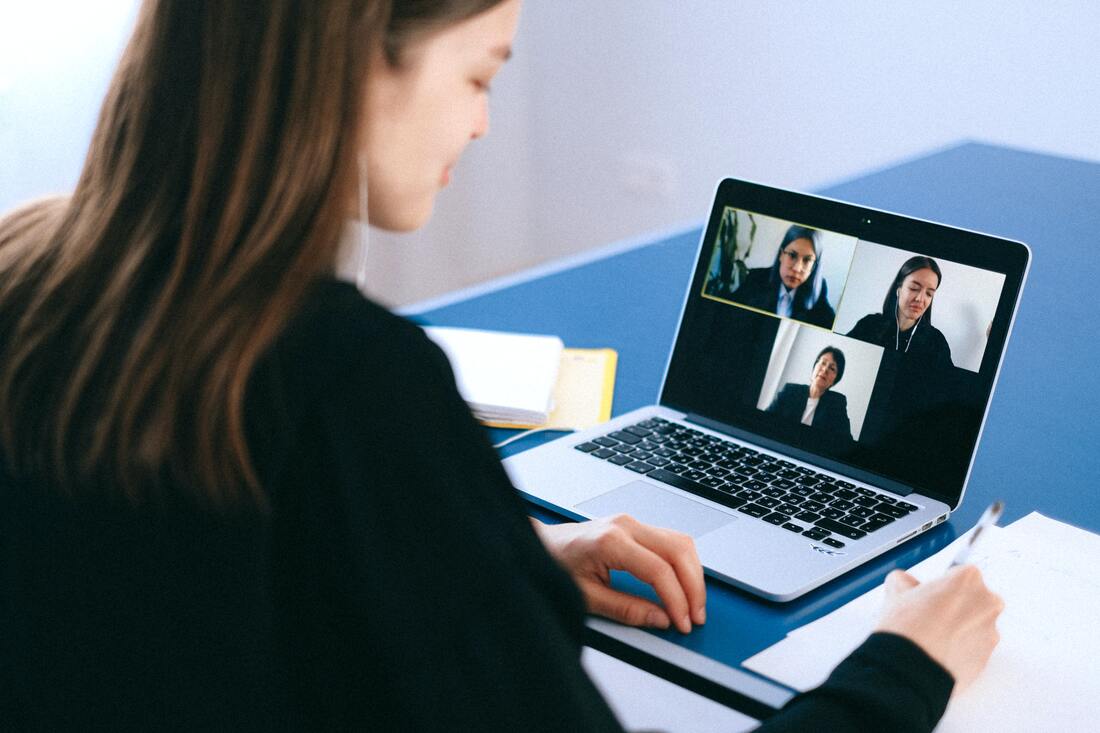|
By: Sadia Akbar After a long day of online classes, have you found yourself feeling unusually drained? If so, you are not alone. Zoom fatigue has been impacting many students in the COVID-19 reality we all currently inhabit.
The transition to using video-conferencing platforms was abrupt and sweeping. Most, if not all of our daily interactions with others were suddenly turned virtual in order to social distance and slow the spread of COVID-19. The extremity of this transition can be seen in the jump in users on Zoom, one of the most commonly-used video-conferencing platforms throughout the pandemic. At the end of 2019, Zoom had approximately 10 million users but by April 2020, this number drastically inflated to over 300 million. While these video-conferencing platforms have been an essential tool in maintaining our everyday lives by allowing classes and meetings to continue following the closure of schools and workplaces, their widespread use has been resulting in increased tiredness, worry, and anxiety for many. This phenomenon is commonly being referred to as “Zoom fatigue”. According to the director of Stanford University’s Virtual Human Interaction Lab, one of the predominant reasons the transition to virtual communication platforms has been taxing on people lies in its disruption to synchrony. Synchrony refers to the precise harmony of verbalizations, gestures, and movements humans rely on to communicate and to ensure we are being understood. Video-conferencing disrupts this synchrony because no matter how good your internet connection is, there is always a slight delay between one person’s actions and the viewer’s observance of it. Even millisecond delays can throw off synchrony and cause our brains to overwork in an effort to restore it. Further, nonverbal gestures and movements are not only important for synchrony. Their disruption on its own also plays a large role in contributing to Zoom fatigue. During in-person communication, we are accustomed to using a myriad of nonverbal cues to help express ourselves and to gage reactions from others. With video-conferencing, we are generally limited to seeing one’s face, and our brains are further taken aback by this deviation from normal communication. In addition, seeing one’s face enlarged on a screen and with prolonged eye contact can register as threatening or as a form of intimidation in our brains, inducing stress. Yet another factor contributing to Zoom fatigue is the constant need to be looking at our cameras and screens to appear to be paying attention. In-person communication gives us the luxury of using our peripheral vision to glance at our environment, take note of our surroundings, and observe others around us. On video-conferencing platforms, glancing away from our screens is more noticeable and can be interpreted as being unengaged. Diverting our attention solely to our computer screens for extended periods of time is unsurprisingly exhausting for our brains. Finally, we do not often see ourselves when communicating in person, but video-conferencing platforms enable us to hyper-fixate on our every expression, facial feature, and other details about ourselves we would not normally register, causing even more stress and anxiety. Aside from the reassurance that we are not alone in experiencing this exhaustion, the identification of these factors is incredibly useful as it allows us to recognize strategies to combat Zoom fatigue. For example, reducing onscreen stimuli is beneficial and can be done through easy fixes, such as hiding yourself from view and encouraging others to sit in front of or use plain backgrounds without too many distractions. Another recommended solution is to build in breaks throughout your day by minimizing the window for a few minutes at a time during a long meeting or by trying to schedule back-to-back meetings for 25 or 55 minutes instead of the typical 30 and 60, to give yourself short breaks in between. It will be interesting to see the fate of video-conferencing in the aftermath of COVID-19. Will its convenience override the consequential mental taxation or will people try to avoid it at all costs in favour of the in-person communication our brains are accustomed to? That remains to be seen. Regardless, while going to class in pyjamas is a definite plus, virtual communication is far from a vacation for our brains. References Fosslien, L., & Duffy, M. W. (2020, April 29). How to Combat Zoom Fatigue. Harvard Business Review. https://hbr.org/2020/04/how-to-combat-zoom-fatigue Wiederhold, B. K. (2020, July 10). Connecting Through Technology During the Coronavirus Disease 2019 Pandemic: Avoiding “Zoom Fatigue”. Cyberpsychology, Behavior, and Social Networking, 23(7), 437-438. http://doi.org/10.1089/cyber.2020.29188.bkw Wolf, C. R. (2020, May 14). Virtual Platforms Are Helpful Tools but Can Add to Our Stress. Psychology Today. Retrieved December 7, 2020, from https://www.psychologytoday.com/ca/blog/the-desk-the-mental-health-lawyer/202005/virtual-platforms-are-helpful-tools-can-add-our-stress
0 Comments
Your comment will be posted after it is approved.
Leave a Reply. |
Categories |


 RSS Feed
RSS Feed